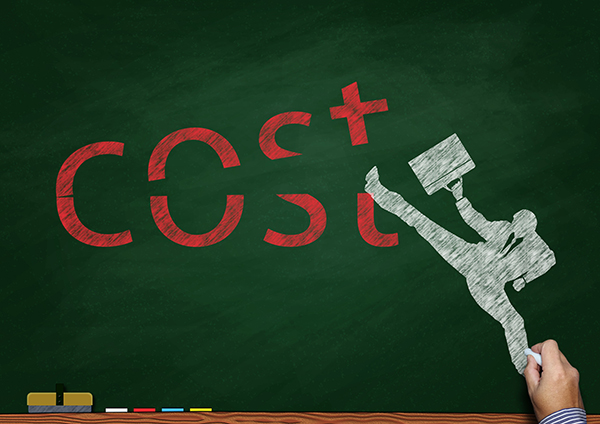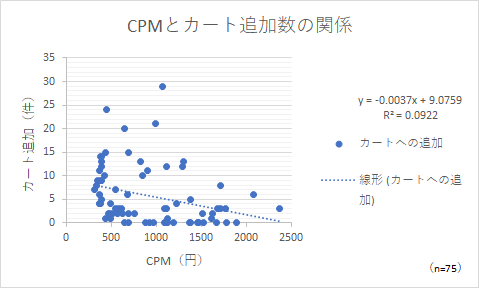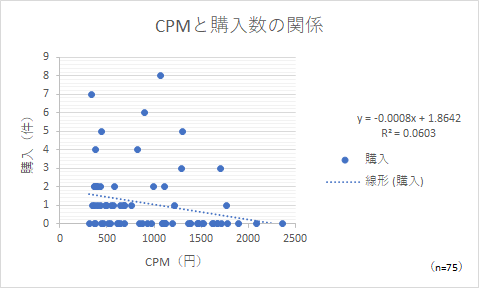premise
 There are mainly CPC billing and CPM billing for Facebook/Instagram ads, but if you select CV as the "Purpose of Advertisement", only CPM billing can be selected.
There are mainly CPC billing and CPM billing for Facebook/Instagram ads, but if you select CV as the "Purpose of Advertisement", only CPM billing can be selected.
For this reason, most of the direct response Facebook/Instagram ads currently operated by Optimizer use the CPM billing method.
In the case of the CPM billing method, it is very important to lower the CPM (cost per 1000 impressions) in order to achieve the client's target number of CVs and target CPA. This is because lowering your CPM will allow you to get more impressions for the same cost, which will increase your chances of converting.
In the case of CPC billing, the concept is the same, and it is important to lower the CPC (cost per click).
In both billing methods, the mechanism of ad distribution is the same, only the timing of billing is different.
An "ad auction" determines whether an ad is delivered.
In the ad auction, the advertisement with the highest overall value combining the following three factors wins (=delivery).
1. Bid price
2. Estimated action rate
3. Advertising quality
In other words,By optimizing the above three elements, CPM or CPC can be lowered.
However, since the system determines the bid price and the estimated action rate, it is difficult for the operator to control.
Operators should focus on improving the quality of advertisements, but detailed scores for advertisement quality cannot be seen (*1).
Also, regarding how the quality is determined, it is only "an ad quality indicator judged based on many sources".
The current situation is that it has not been made public.
*1…In the “Quality Ranking” item, you can check the three-level evaluation from above average, average, and below average from the management screen.
![]()
the purpose
 As mentioned above, in order to improve the performance of advertisements,
As mentioned above, in order to improve the performance of advertisements,
It is known that one way to lower the important CPM is to increase the "advertising quality", but there are no specific indicators that should be improved in order to increase the "advertising quality".
However, similar to the quality scores of listing ads on Google and Yahoo!, it is believed that ads deemed beneficial to users will be highly evaluated.
It is assumed that the ad clicks and likes It is possible to hypothesize that the user's reaction rate is related, such as.
Therefore, in this paper, we analyzed the relationship between CPM and each index based on the CPM data by creative of accounts that frequently replaced ad creatives in order to improve the user reaction rate, and analyzed the relationship between CPM and each index, and found the important index for lowering CPM ( = an indicator that can be presumed to be related to “advertising quality”).
![]()
About the survey
Project information
●Industry: Manufacture and sale of pet clothes
● Ad delivery destinations: Facebook, Instagram, Audience Network (automatic placement)
● Ad type: Single image ad, carousel image ad, single video ad,
collection ads
● Achievement point: Completion of purchase of pet clothes and miscellaneous goods

※The image is an image
targeting
●Region: Japan
●Age: 25-64 years old
Gender: Female
Interests: Dog collar, Dog grooming, Dog harness, Dog toy, Dog training, Dog walking,
dog food, dog run, dog, poodle, chihuahua
Method
● Aggregation period: May 14, 2019 to July 24, 2019
● Number of data: 75 (total number of creatives)
● Extract CPM and user reaction indicators for each creative from the management screen,
Correlation analysis was performed for CPM and each index.
Regarding the strength of the correlation, as a general value, the correlation coefficient r is
●When r=±0.0~±0.2 Almost no correlation
●When r=±0.2~±0.4 There is a weak correlation
●When r=±0.4 to ±0.7 There is a correlation
●When r=±0.7~±0.9 There is a strong correlation
●When r=±0.9~±1.0 Almost perfect correlation
evaluated as
![]()
result
(1) CPM and CTR
When Pearson's product-moment correlation coefficient was calculated for CPM and CTR, it was found to be r=0.21, indicating a weak positive correlation.
A scatter plot was created as shown below.

(2) CPM and number of saved posts
When calculating Pearson's product-moment correlation coefficient between CPM and the number of saved posts, it was found to be r=-0.48, indicating a negative correlation.
A scatter plot was created as shown below.

(3) CPM and post shares
When Pearson's product-moment correlation coefficient was calculated for CPM and the number of shares of posts, it was r = -0.17, and there was almost no correlation.
A scatter plot was created as shown below.

(4) CPM and number of reactions
When Pearson's product-moment correlation coefficient was calculated for CPM and the number of post reactions, it was found to be r=-0.20, indicating a weak negative correlation.
A scatter plot was created as shown below.

(5) CPM and number of cart additions
We calculated Pearson's product-moment correlation coefficient between CPM and the number of cart additions, and found that r=-0.30, indicating a weak negative correlation.
A scatter plot was created as shown below.

(6) CPM and number of purchases
When Pearson's product-moment correlation coefficient was calculated for CPM and purchase addend, it was found to be r=-0.25, indicating a weak negative correlation.
A scatter plot was created as shown below.

![]()
consideration
In our results, the number of saved posts showed the strongest correlation with CPM.
A negative correlation means that creatives with more saved posts have lower CPMs.
The next most correlated items were CPM and number of cart additions.
Normally, this would be a micro CV point, but in this account, it is set as an optimization target for ad distribution.
From this, it can be said that the higher the number in the "result" column on the management screen, the lower the CPM.
The number of reactions and the number of purchases also showed a weak negative correlation with CPM.
In other words, it can be said that CPM decreases as these indicators improve.
Regarding the relationship between CTR and CPM, which was shown to have a weak positive correlation, the relationship is that CPM increases as CTR increases,
This is done by scrutinizing creatives with significantly high CPMs,
The number of impressions was extremely low because it was stopped early,
There is room for further verification, as it is thought that there was an effect of accidentally resulting in a high CTR.
Regarding CPM and the number of shares of posts, which were the only ones with no correlation, the number of shares of posts was small,
In addition, the correlation coefficient r < 0.2 because there was one outstanding creative with 5 shares,
If you look at the scatter diagram, you can see that creatives with 1 post share are concentrated around CPM 500 yen,
There is a possibility that a correlation can be found if verification is performed using more data in the future.
![]()
summary
From the above analysis results, the indicators that are important for lowering CPM (=an indicator that can be presumed to be related to "advertising quality") are ranked in descending order of impact.
1. number of posts saved
2. Number of conversions (targeted for ad optimization)
3. Number of conversions not targeted for optimization
4. CTR
5. Number of reactions
6. Number of post shares
It can be said.
For this reason, until now, CTR has often been the most important factor in creative testing.
From the perspective of improving ad performanceThe quest for “creatives that are saved (users want to look back)”
found to be important.
About Facebook / Instagram advertising agency and operation agency
![]()